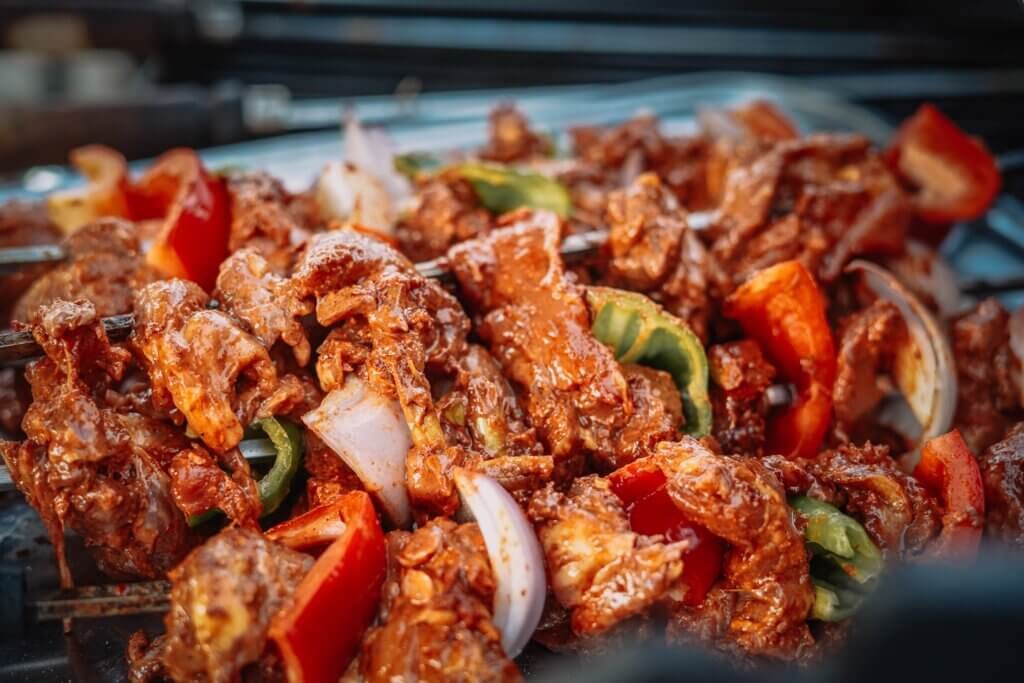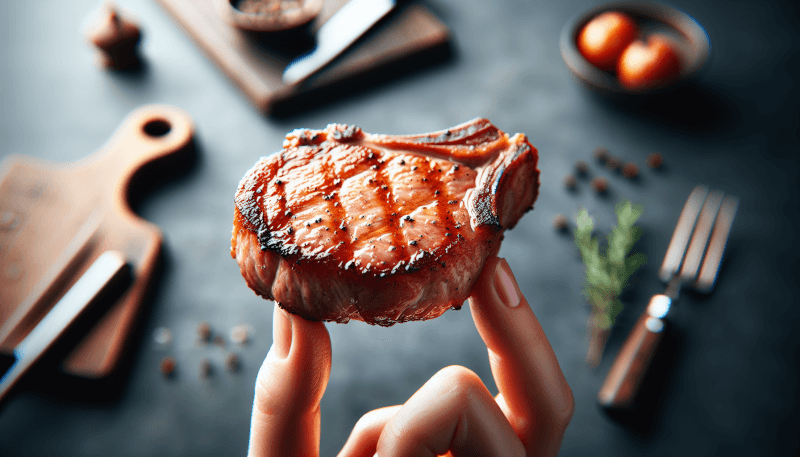If you’re standing at the meat counter, surrounded by various cuts of pork, you may find yourself pondering: How do I choose a good quality pork cut? It can be a daunting task, but fear not! With a few tips and tricks up your sleeve, you’ll soon be able to confidently select the perfect pork cut for your culinary endeavors. From examining the color and marbling to understanding different cuts and their cooking methods, this article will guide you in making a well-informed decision that will elevate your next meal to new heights of succulence and flavor. So, let’s get started on this pork-filled adventure together!

Understanding Pork Cuts
When it comes to selecting the perfect pork cut, it’s important to understand the different options available to you. Different cuts of pork have different characteristics, flavors, and textures, which can greatly impact the overall taste and cooking method. By familiarizing yourself with the various pork cuts, you can make informed decisions and create delicious meals that will leave your taste buds satisfied.
Differentiating Between Pork Cuts
Pork cuts can be categorized into different sections of the pig, each offering distinct qualities. Understanding these categories will help you navigate the meat aisle with confidence.
Common Pork Cuts
Here are some of the most common pork cuts you’re likely to come across at your local butcher or grocery store:
Freshness and Appearance
When selecting pork cuts, freshness is a crucial factor to consider. Eating fresh pork not only ensures a better taste but also reduces the risk of any foodborne illnesses. To evaluate the freshness of pork, there are a few key indicators to look out for.
Evaluating Freshness
Firstly, check the smell of the pork. It should have a mild, fresh scent. Any foul or rancid odor is a sign that the meat is past its prime. Additionally, inspect the texture of the pork. It should be firm and moist, with no slimy or tacky residue. Lastly, examine the color of the meat. Fresh pork should have a pink hue, and any discoloration or gray patches could indicate spoilage.
Examining Color and Texture
Color and texture are essential factors to observe while choosing pork cuts. The color can vary depending on the specific cut, but it should generally be vibrant, with no signs of excessive bruising or discoloration. Furthermore, a good pork cut should have a slightly marbled appearance, with small streaks of fat running through the meat. This marbling ensures juiciness and enhances the overall flavor.
Marbling and Fat Content
Marbling refers to the intramuscular fat found within the meat. This fat contributes to the tenderness and flavor of the pork. When choosing a cut, it’s important to consider the level of marbling and fat content that suits your preferences and cooking method.
Recognizing Intramuscular Fat
Intramuscular fat is the white streaks you see in the meat, and it’s a positive attribute when it comes to pork cuts. These little pockets of fat melt during cooking, adding juiciness and flavor to the meat. Look for cuts with a moderate amount of marbling, as excessive fat can result in greasy or overly fatty dishes.
Considering Fat Content
While some cuts of pork are naturally leaner than others, the amount of fat can vary depending on factors such as the pig’s breed and diet. If you prefer lean meat, opt for cuts with less visible fat. However, keep in mind that some fat is beneficial for flavor and tenderness. Balancing the fat content to your liking is crucial for achieving the perfect pork dish.
Loin Cuts
The loin is one of the most tender and prized parts of the pig, offering a range of succulent cuts that are perfect for various cooking techniques.
Tenderloin
The tenderloin is the leanest and most tender cut of pork. It is located in the middle of the back, running from the shoulder to the rear leg. This cut is highly versatile and can be cooked whole or sliced into medallions. Its mild flavor and tender texture make it a popular choice for quick grilling, roasting, or even pan-searing.
Pork Chops
Pork chops are another popular loin cut that offer a perfect balance of tenderness and flavor. These bone-in or boneless cuts come from the loin and can be cooked using a variety of methods, including grilling, baking, or pan-frying. When selecting pork chops, look for ones with a pinkish color, a thin layer of fat along the edge, and a good amount of marbling for added juiciness.

Shoulder Cuts
The shoulder of the pig, also known as the pork shoulder or Boston butt, offers cuts that are rich in flavor and ideal for slower cooking methods.
Pork Shoulder
The pork shoulder is a well-marbled cut that comes from the upper part of the front leg. It is often used for pulled pork dishes, as the slow cooking process allows the meat to become incredibly tender and full of flavor. When choosing a pork shoulder, look for even marbling throughout the meat and a layer of fat on the outside, as this will enhance both the taste and texture.
Picnic Shoulder
The picnic shoulder is another shoulder cut that is slightly leaner and less tender than the pork shoulder. It is often cured and smoked to create delicious ham-like flavors. This cut is perfect for roasting or braising, as the longer cooking time will allow it to become tender and develop a rich, smoky taste.
Ham Cuts
Ham cuts are typically taken from the hind leg of the pig and can be enjoyed in various forms, from steaks to hocks.
Ham Steaks
Ham steaks are slices of ham that are perfect for quick and easy meals. These cuts are already fully cooked and can be enjoyed cold or heated through in a pan or on the grill. Ham steaks are often thicker than deli-style ham slices, offering a heartier bite and a rich, smoky flavor.
Ham Hocks
Ham hocks are the lower portion of the pig’s leg and are typically used to flavor soups, stews, and stocks. These cuts are quite fatty and have a strong, smoky taste. When choosing ham hocks, look for ones with a good balance of meat and fat, as this will contribute to both the flavor and texture of your dishes.
Belly Cuts
Belly cuts are known for their rich, fatty nature, which adds incredible flavor to many dishes.
Pork Belly
Pork belly is a fatty and flavorful cut taken from the underside of the pig. It is often used in dishes like braised pork belly or crispy pork belly, where the fat is rendered down to create a delectable melt-in-your-mouth texture. When choosing pork belly, look for even layers of fat and meat, as this will ensure a good balance of flavors.
Bacon
Bacon is arguably one of the most beloved pork cuts worldwide. Made from pork belly, bacon is typically cured and smoked, resulting in its signature salty and smoky flavor. When selecting bacon, choose slices with an even distribution of fat and lean meat, as this will ensure crispiness when cooked.
Leg Cuts
Leg cuts offer leaner options that are perfect for roasting or grilling.
Leg Roast
Leg roast, also known as pork leg or ham roast, is a large and lean cut taken from the hind leg of the pig. It is often used for roasting or slow cooking, resulting in tender and succulent meat. Look for leg roasts with a pinkish color, a small amount of exterior fat for extra moisture, and minimal connective tissue for a more enjoyable eating experience.
Leg Steaks
Leg steaks are individual cuts sliced from the leg roast. They offer a leaner option for those looking to enjoy pork without excessive fat. Leg steaks are perfect for grilling or pan-searing, providing a hearty and flavorful meal. Look for steaks with uniform thickness and a moderate amount of marbling for optimum tenderness and taste.
Sausage and Ground Pork
Sausage and ground pork are versatile options that are often used as a base for various dishes or enjoyed on their own.
Pork Sausage
Pork sausage is typically made from a combination of ground pork and various seasonings. It is a common ingredient in breakfast dishes, stews, and pasta sauces. When selecting pork sausages, consider the type of seasoning and casing used, as they greatly impact the overall taste. Look for sausages with a good balance of meat and fat, ensuring a juicy and flavorful bite.
Ground Pork
Ground pork is a fantastic option for those who prefer to create their own dishes from scratch. Whether you’re making meatballs, dumplings, or stir-fries, ground pork provides versatility and flavor. Look for ground pork with a good balance of lean meat and fat, as this will ensure juiciness and prevent your dishes from becoming too dry.
Additional Considerations
In addition to understanding the different pork cuts, there are a few more factors to consider when choosing quality pork.
Certifications and Labels
Certifications and labels can be helpful indicators of the pork’s quality and origin. Look for labels that indicate the meat has been raised without antibiotics or hormones, as this ensures a more natural and healthier product. Additionally, certifications such as organic or humane farming practices can give you peace of mind knowing that the pork comes from responsible sources.
Preferences and Recipes
Ultimately, your personal preferences and the recipes you plan to make should guide your choice of pork cuts. Consider the specific flavors and textures you desire in your dishes and explore different cuts accordingly. Experimenting with various cuts and recipes is a fun way to discover new flavors and find your favorites.
In conclusion, understanding pork cuts is essential for selecting the perfect cut to suit your cooking needs and preferences. By evaluating freshness, considering marbling and fat content, and exploring various cuts, you can confidently choose the right pork for delicious meals that will satisfy your taste buds. So the next time you visit your local butcher or grocery store, armed with this knowledge, you’ll be ready to make the best pork selections for your culinary adventures. Enjoy!



